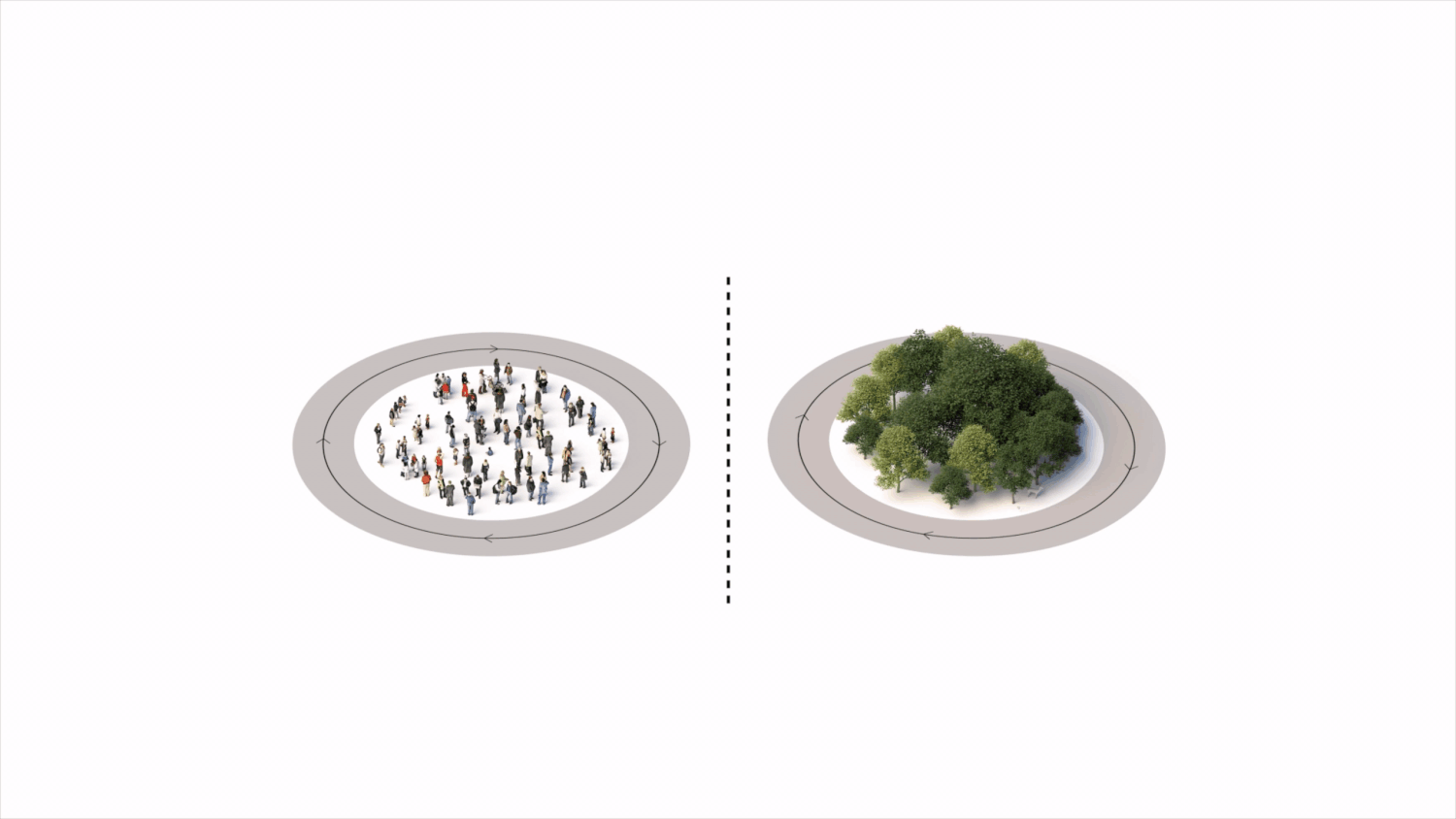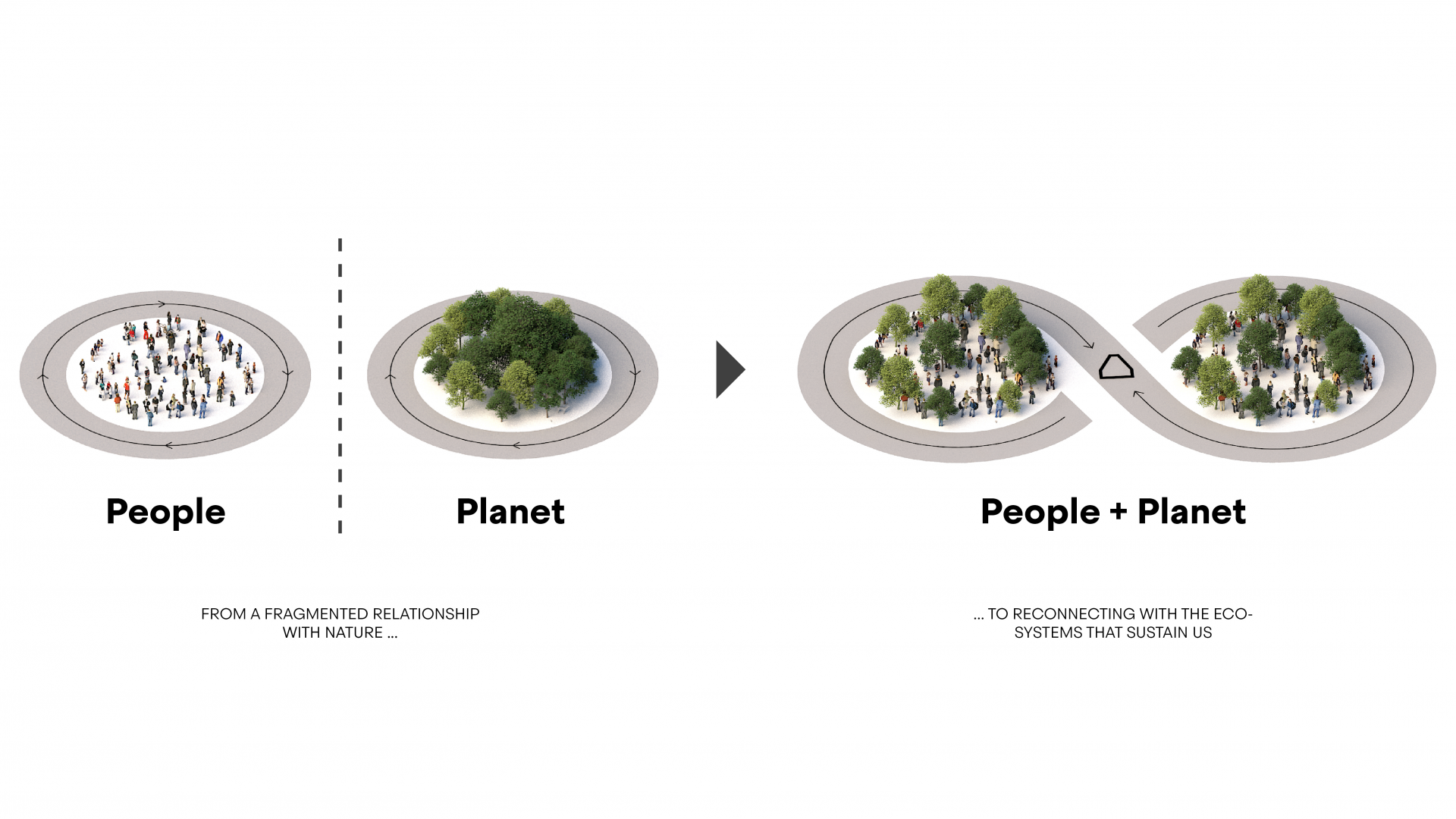The VELUX Group launches commitment to sustainable buildings and communities
How good building design can improve people’s well-being and benefit the planet
The sustainable buildings and communities concept Build for Life addresses multiple challenges in the building industry, based on a new way of thinking about new and existing living spaces.
What if we could live in a more sustainable, connected and healthy manner? This is one of several fundamental questions addressed in the Build for Life concept, developed by VELUX, and discussed during the Build for Life conference. The Build for Life concept is rooted in a strong commitment to show how it is possible to build sustainably and enable happier and healthier living places.
Build for Life is founded on the understanding that the way we build today has an enormous impact on people, as well as the ecosystems that sustain us. The concept provides a compass for designers, city planners and building professionals along with suggestions for ways to address some of the most pressing dilemmas we face:
- Environment: Buildings alone are responsible for around 39% of global CO2 emissions and 40% of the world population need new homes (UNEP, 2015). The world furthermore needs to reach net-zero emissions before 2050 to curb the climate crisis. By using low impact materials and focusing on the LCA of a building, we could meet the demand for increased housing without depleting the Earth’s resources.
- Health: We spend up to 90% of our time indoors, but fail to create a healthy indoor climate in buildings, due to the application of a one-size-fits-all approach in our building designs and compromising on the quality of construction materials. By designing buildings using healthy indoor principles and materials, we can create buildings that don’t just make you less sick but also improves your health.
- Affordability: An additional 2.5 billion people are expected to live in cities by 2050. At the same time, most cities across the globe have seen a substantial and steady increase in housing prices, making our built environment unaffordable for the people who would benefit from them the most. By designing a built environment that focuses on affordability through design, shared living, and new business cases we could unlock housing for the people that will benefit from it the most.
- Community: Despite living closer together and being more connected than ever, people feel more lonely, anxious and stressed than ever before. One in five people in Denmark, for instance, long for community and a sense of belonging. By designing a built environment that enables community through sharing, participation, identity and safety, we could increase wellbeing and improve overall health whilst reducing anxiety, loneliness and stress.
Homes and communities should be centred around healthy and regenerative design principles to be designed for both people and planet. Build for Life is more than a design concept, it is a way of thinking and living,
Build for Life is a regenerative approach for our future built environment
VELUX launches Build for Life as part of its wider sustainability strategy and as a contribution to the UN’s SDG11 (Sustainable Cities And Communities), taking its +18 years of best practices in sustainable buildings to a new level.
Illustration for Build for Life – Connecting people & planet through building design:

The Build for Life concept is expanded in a Compass Model, outlining seven strategic drivers – flexibility, quality, environment, health, community, local, affordability – to guide the building and development process. These drivers enable collaborators across sectors to follow an easy, open-source framework for developing and transforming buildings for the future.
Build for Life goes above and beyond the design level by shaping a new common language and way of thinking aimed at the entire industry, fuelled by the strong belief that only by working together across the industry will we be able to achieve healthier and more sustainable living places for all.
The Compass Model had been created in partnership with EFFEKT architects, MOE engineers, LeaderLab and the VELUX Group. The Compass is intended as a partnership platform and invites more partners with like-minded visions to lead the change within the built environment.
Leading by example: Five principles for living spaces
To show how to build sustainably the VELUX Group has, together with partners EFFEKT architects and MOE engineers, developed five principles for living spaces. The principles take a point of departure in the typical market benchmark and propose different improvements and reductions that can be made to improve the market standard. The principles address health, sharing, simplicity, adaptability and scalability.
The Build for Life conference, 15-17 November
The Build for Life design was launched at the global conference, under the same headline, bringing together architects, builders, engineers, designers, planners and other industry professionals.
Free and open to all, the hybrid of in-person presentations and interactive digital dialogues took place from 15 – 17 November 2021 and hosted speakers on two stages, the Compass Stage and the Daylight Symposium Stage. More than 90 expert speakers from around the world presented from the two main stages in Copenhagen, Denmark, and from stages in North America and China.
For more information about the Build For Life Conference, please visit Build For Life.
About the VELUX Group
For more than 80 years, the VELUX Group has created better living environments for people around the world; making the most of daylight and fresh air through the roof. Our product programme includes roof windows and modular skylights, decorative blinds, sun screening products and roller shutters, as well as installation and smart home solutions. These products help to ensure a healthy and sustainable indoor climate, for work and learning, for play and pleasure. We work globally – with sales and manufacturing operations in more than 36 countries and around 11,000 employees worldwide. The VELUX Group is owned by VKR Holding A/S, a limited company wholly owned by non-profit, charitable foundations (THE VELUX FOUNDATIONS) and family. In 2022, the VELUX Group had total revenue of EUR 2.99 billion, VKR Holding had total revenue of EUR 4.29 billion, and THE VELUX FOUNDATIONS donated EUR 181 million in charitable grants.
For more information about VELUX Group, visit velux.com.




